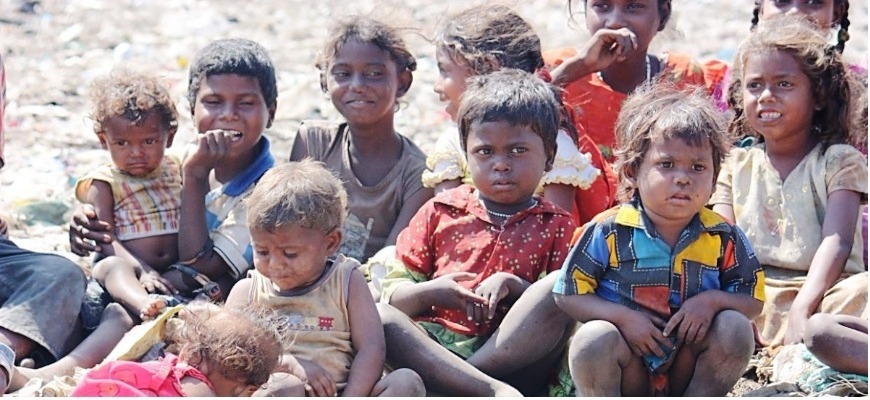At least 4 billion people across the globe lives without a single social protection: International Labour Organization
Geneva, December 17: Only 45 percent of the global population is effectively covered by at least one social benefit, while the remaining 55 percent i.e 4 billion people are left unprotected. Notably, despite significant progress in the extension of social protection in many parts of the world, the human right to social security is not yet a reality for a majority of the world’s population.

According to new data presented in the World Social Protection Report 2017/19: Universal social protection to achieve the Sustainable Development Goals, only 45 percent of the global population is effectively covered by at least one social benefit, while the remaining 55 percent i.e 4 billion people are left unprotected.
The new research also showed that only 29 percent of the global population enjoys access to comprehensive social security, a small increase compared to 27 percent in 2014-2015. While the other 71 percent, or 5.2 billion people are not, or only partially, protected.
However, the report recommended an increase of public expenditure on social protection to extend social protection coverage, especially in Africa, Asia and the Arab States, to provide at least a basic social protection floor to all.
It also highlighted that universal social protection contributes to eradicating poverty, reducing inequality, promoting economic growth and social justice, as well as achieving the Sustainable Development Goals (SDGs), and shows how many developing countries have developed universal schemes. The report further stressed the need to extend social protection to workers in the informal economy as a way of formalizing and improving their working conditions.
Main findings of the report:
The ILO report looks at specific aspects of social protection, providing global and regional findings based on new data in the following areas:
Social protection for children:
The report shows that only 35 percent of children worldwide enjoy effective access to social protection. Almost two-thirds of children globally, 1.3 billion children are not covered, most of them living in Africa and Asia.
On average, just 1.1 percent of GDP is spent on child and family benefits for children aged 0-14, pointing to significant underinvestment in children.
Cash transfers for children have expanded in low- and middle-income countries over the past decades. However, coverage and benefit levels often remain insufficient. A number of countries even reduced social protection for children in the wake of fiscal consolidation policies.
Social protection for women and men of working age:
Social protection coverage for persons of working age is still limited. Only 41.1 percent of mothers with newborns receive a maternity benefit, and 83 million new mothers remain uncovered.
Other findings in this area include the fact only 21.8 percent of unemployed workers are covered by unemployment benefits, while 152 million unemployed workers remain without coverage.
New ILO data also shows that only 27.8 percent of persons with severe disabilities worldwide receive a disability benefit.
Social protection for older men and women:
The research also said that, worldwide, 68 percent of people above retirement age receive an old-age pension, which is associated with the expansion of both non-contributory and contributory pensions in many middle and low-income countries.
With expenditure on pensions and other benefits for older people accounting for 6.9 percent of GDP on average with large regional variations, the report underlines that benefit levels are often low and not enough to push older people out of poverty. This trend is often fuelled by austerity measures.
Some states are reversing their pension privatizations due to the fact that privatization policies did not deliver the expected results. Countries like Argentina, Bolivia, Hungary, Kazakhstan and Poland are returning to public solidarity-based systems.
Universal health coverage:
The report showed that the right to health is not a reality yet in many parts of the world, especially in rural areas where 56 percent of the population lacks health coverage, compared to 22 percent in urban areas. An estimated additional 10 million health workers would be needed to achieve universal health coverage and ensure human security, including in emergency situations such as an Ebola crisis.
Long-term care which is mostly needed by older people, still excludes more than 48 percent of the world’s population, with women disproportionately affected. Only 5.6 percent of the global population lives in countries that provide long-term care coverage based on national legislation for the whole population.
Because of this, an estimated 57 million unpaid “voluntary” workers provide the bulk of long-term care coverage. Many of them are women who carry most of the burden of informal care for family members. More investment in care services could alleviate old-age poverty and generate millions of jobs to address the shortage of skilled care workers, estimated at 13.6 million globally.
The World Social Protection Report also offered a broad range of global, regional and country data on social protection coverage, benefits and public expenditures on social protection. By presenting new estimates on effective social protection coverage, it provides the 2015 baseline for the Sustainable Development Goal (SDG) indicator 1.3.1.
Adopted in 2015, the UN’s SDGs reflect the joint commitment of countries to “implement nationally appropriate social protection systems for all, including floors” for reducing and preventing poverty (SDG 1.3). This commitment to universalism reaffirms the global agreement on the extension of social security achieved by the ILO’s Social Protection Floors Recommendation No. 202, adopted by governments, workers and employers from 185 countries in 2012.